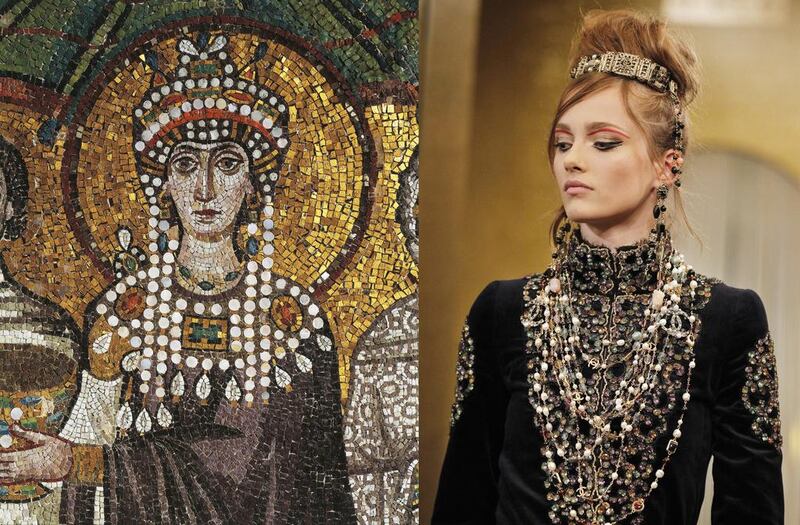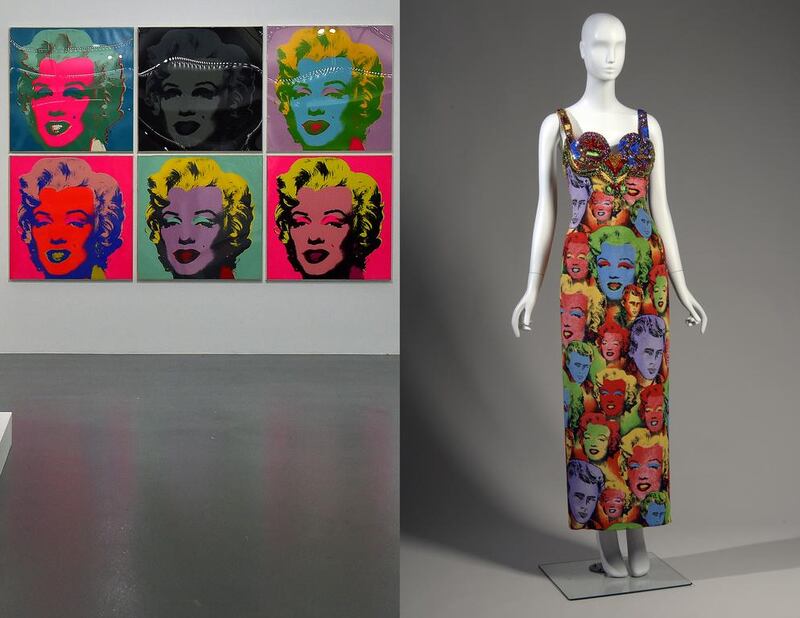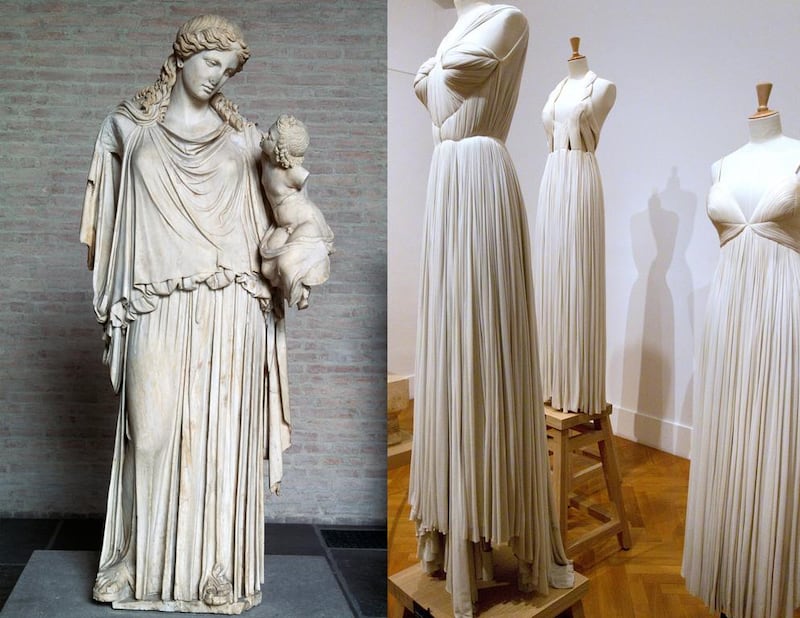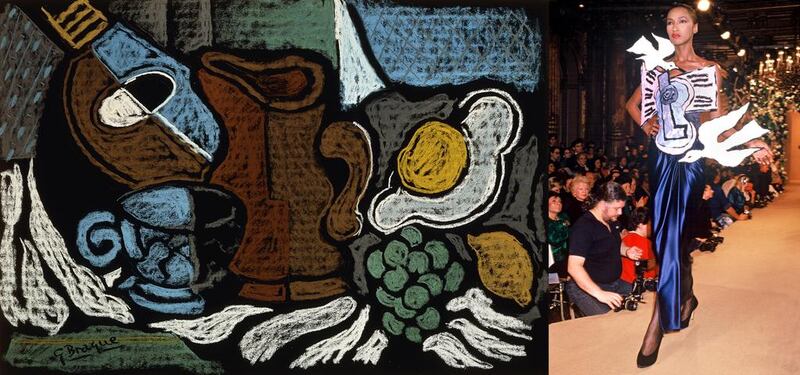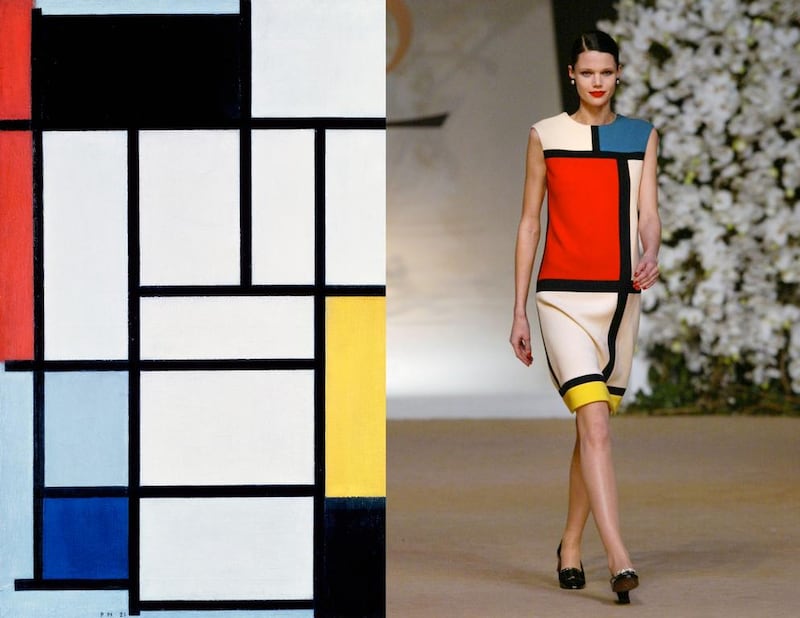The love affair between fashion and art is a long-standing, if sometimes unbalanced, one – and it is a relationship that has flourished over the last century as boundaries between creative fields have become increasingly blurred.
Julien Tomasello, co-author of Art + Fashion: Collaborations and Connections Between Icons, which was published last October by Chronicle Books, attributes this to two important factors. "The worlds of fashion and art are now very closely interlinked," says The New York Times best-selling art and photography editor.
“Their relationship to one another has steadily grown closer throughout the 20th and 21st centuries. I believe that this is due to two factors: one, the successful results of past fashion and art collaborations, such as Elsa Schiaparelli and Salvador Dalí, which gradually lessened the hesitation of these two wonderfully narcissistic and rarefied worlds to work together; and two, the never-ceasing demand for new stimuli in our technologically addicted and culturally ravenous society. This demand, from hungry consumers, has made for surprising bedfellows in the art and design worlds, as visionaries team up and shift into overdrive to produce visual goods never seen before.”
Any story about the relationship between fashion and art must invariably begin with Ms Schiaparelli. Disparagingly referred to by Coco Chanel as “that Italian artist who makes clothes”, Schiaparelli was fashion’s original enfant terrible. The two women were contemporaries – both launching their fashion houses in the early 20th century – but Schiaparelli positioned herself at the heart of 1930s Parisian avant-gardism. She counted some of the best-known artists of the time, including Dalí, Man Ray, Christian Bérard and Jean Cocteau, among her closest friends.
From these relationships came outlandish creations – most famously, the Lobster Dress, which Dalí painted by hand; the wonderfully surreal Shoe Hat, also by Dalí; and an embroidered evening coat designed by Cocteau that features two profiles facing each other in his trademark style.
While Schiaparelli may not have been the first designer in history to take her cues from the art world, she was certainly the first to do it in such a populist way. "In order for any art to have true meaning, it must have an audience to influence," says Tomasello. "And certainly, both Elsa Schiaparelli and Salvador Dalí had a captivated worldwide audience following their creative endeavours. When the two came together, it was the equivalent of a modern-day duet of musical superstars. The world paid attention – not only to their Lobster Dress, featured in our book, Art + Fashion, but to other collaborations from the duo, such as the Bureau Drawer Dress and the Skeleton Dress."
Another famous example of the intermingling of art and fashion comes courtesy of Yves Saint Laurent. In 1965, Saint Laurent presented a collection that paid homage to the work of his favourite modernist artists. Because six of the cocktail dresses were inspired by the works of the famed Dutch artist Piet Mondrian, the collection has since come to be known as the Mondrian Collection. Consisting of intersecting black stripes and blocks of primary colours in Mondrian's signature "neoplasticism" style, one of the dresses was featured on the cover of French Vogue, and the pieces were copied ad infinitum. Saint Laurent, an artist himself, amassed a significant collection of art during his lifetime – from Picasso to Cézanne and Miklós to Matisse, his sources of inspiration were manifold.
There are plenty of more recent examples, too, many of which are explored in Art + Fashion – from Versace's collaboration with Tim Roeloffs for autumn/winter 2008, which saw the Dutch artist create a montage of decidedly urban scenes that were spliced onto pretty dresses; to Vivienne Westwood's work with the American graphic designer Keith Haring in the 1980s, where Haring's bold graffiti-chic motifs were emblazoned across punk-inspired clothing; and Alexander McQueen's tie-up with Damien Hirst in 2013, which was inspired by Hirst's Etymology series and saw butterflies, bugs, spiders and other insects worked into geometric designs to form McQueen's signature skull motif on scarves.
But for E P Cutler, co-author of Art + Fashion, it was a collaboration undertaken by Raf Simons that really sets the bar for art-fashion tie-ups. "I have been enchanted by the work of Raf Simons since 1995," says the New York-based fashion journalist, author and historian. "For autumn/winter 2014/15, Simons put his namesake menswear collection on ice and collaborated with the Los Angeles-based German artist Sterling Ruby on a one-time-only label, Raf Simons/Sterling Ruby. To me, it epitomised the best of collaboration, where every single piece was made together by the two men, sans distinction. One could not determine what was the 'art' of Sterling Ruby or the 'fashion' of Raf Simons with absolute certainty; it was both men, both fields ... the emphasis was on creation, and the ideas both grapple with revolving around the construction and vulnerability of masculinity, alienation and anger in urban society. Perfection."
Tomasello, meanwhile, points to Bottega Veneta’s Art of Collaboration project, which has had the brand’s creative director, Tomas Maier, invite a different photographer, artist or creative to shoot an advertising campaign for the company each season since 2002.
"I love, love, love the collaboration between fine art photographer and filmmaker Alex Prager and Bottega Veneta. Prager was commissioned by Bottega Veneta to photograph the fashion brand's spring/summer 2011 campaign. The resulting photographs are a contemporary homage to Alfred Hitchcock's film North by Northwest, and create an interesting narrative of woman as fashion victim," he says.
Despite appearances, the interplay between fashion and art is not an entirely one-sided affair. “I think they absolutely inspire each other; fashion just has no qualms about admitting it,” Cutler says.
Tomasello agrees, but notes that the art world has always been less vocal and more insular than fashion. “If I had to choose who has borrowed more from whom in the fashion and art relationship, I’d have to say fashion. After all, fashion is functional art that is created and reproduced via collections two to three times (if not more) per designer, per year. And fashion has never made an issue of looking at the world around it for inspiration – whether it be from art, politics, cinema or music. Because the consumer’s expectation is to be able to replenish its wardrobe every season, fashion has a far greater need to borrow from culture at large.
“Nevertheless, the art world is catching up. There are more and more contemporary artists who are looking at the world of fashion for direct inspiration to their own work. These young artists have none of the stuffy hesitations their predecessors held regarding the fashion world.”
Either way, this is a relationship that has the potential to yield endlessly fascinating results – and there are plenty of stories still to be told, says Cutler. “I’m drawn to the collaborations that haven’t yet been fully explored, many from the early 20th century, like couturier and self-proclaimed ‘King of Fashion’ Paul Poiret and artist and textile designer Raoul Dufy; artist Gustav Klimt and designer Emilie Flöge, who designed many of the dresses Klimt painted into fame; and Léon Bakst of the Ballets Russes and designer Jeanne Paquin, just to name a few. I’m always looking to tell the untold stories, and dig into history on the verge of being forgotten.”
But what most intrigues Cutler are future collaborations – the ones that have yet to occur. “The most important ones are the ones happening now and the ones that haven’t happened yet. Fashion is a very hopeful business – it’s always looking toward the future and the possibility inherent in tomorrow.”
Art + Fashion: Collaborations and Connections Between Icons is available on Amazon.
Look for this and more stories in Luxury magazine, out with The National on Thursday, March 3.
sdenman@thenational.ae
